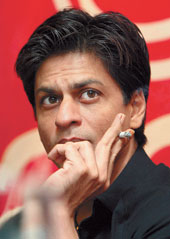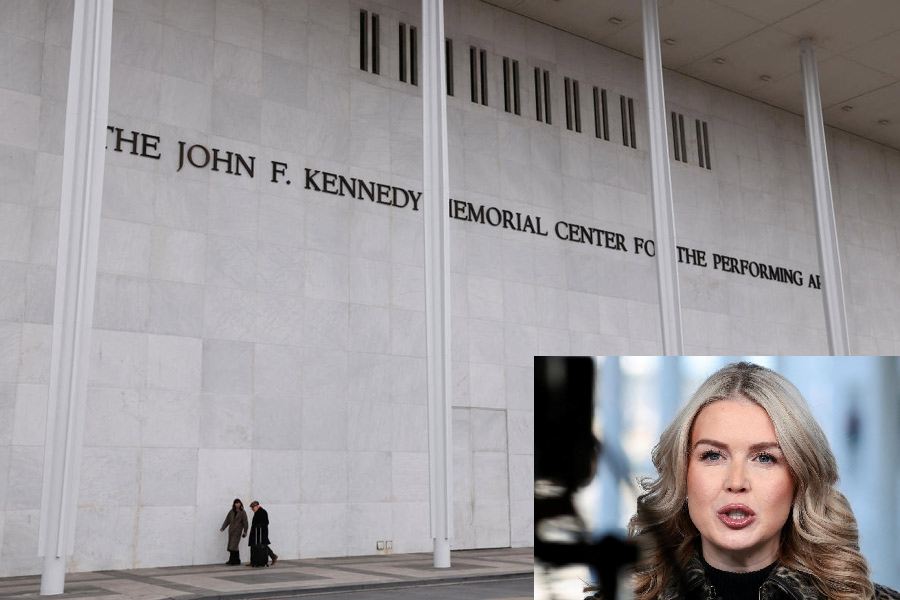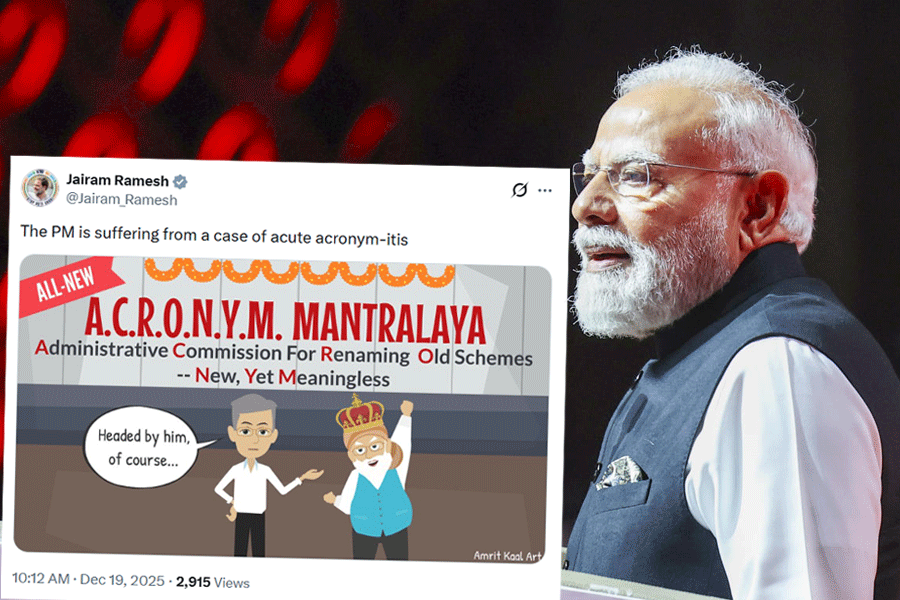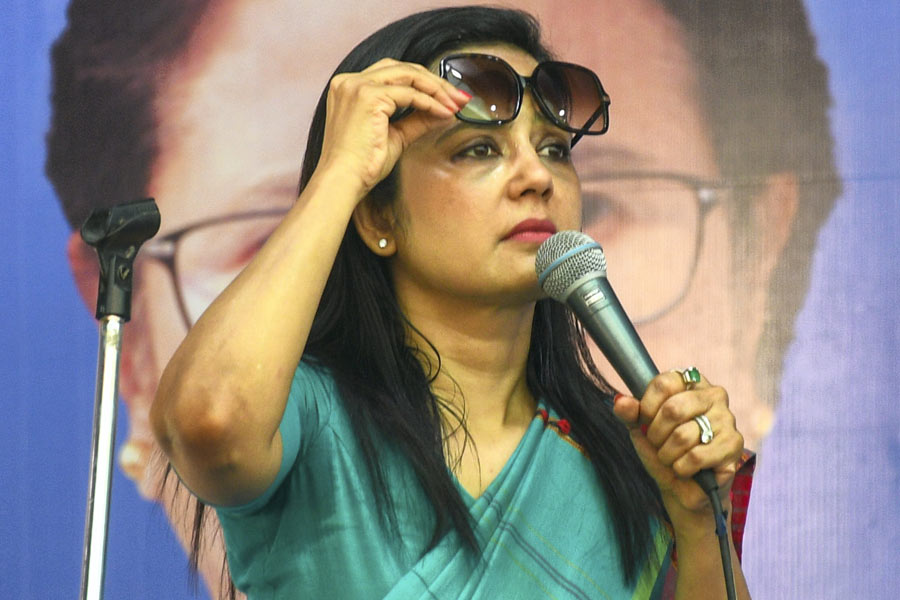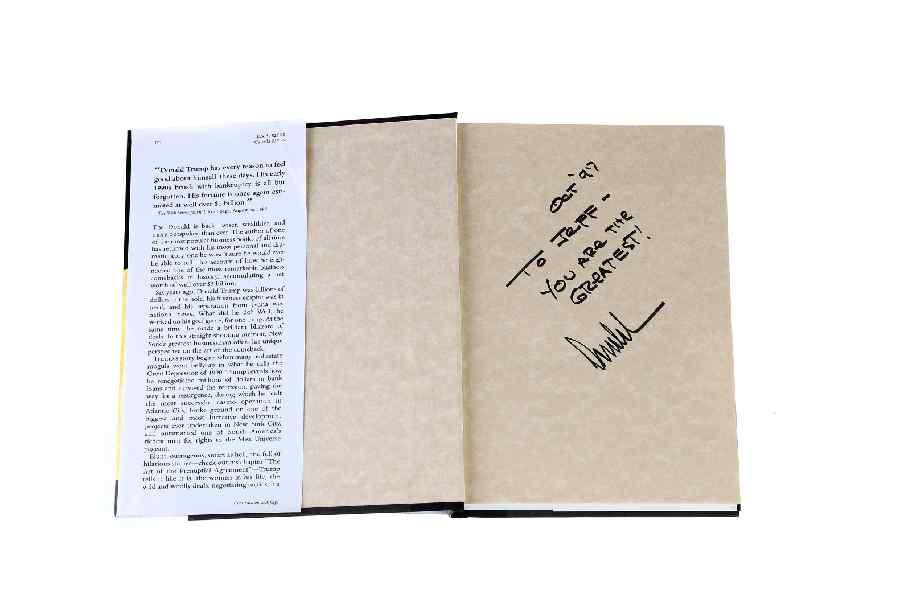 |
| INNER EYE: Shah Rukh Khan (above) and the docu-filmmaker Photo: Jonathan Page |
 |
Nasreen Munni Kabir made a quiet pact with the movies when she was growing up in England in the Fifties. As an immigrant, the Hyderabad-born settler told herself, she would soak up every Hindi film that mounted the marquee. She did that ? and continues to do so.
So, not surprisingly, Kabir is the most prolific chronicler of contemporary Hindi cinema today. And now, with a repertoire of nearly 100 documentaries, and books on Hindi cinema, the London-based filmmaker is closing her new project ? a twin-film on the king of Bollywood, Shah Rukh Khan.
The world looks at Shah Rukh Khan as a star on a conveyor belt of frenzied action. Kabir, whose films are to be telecast by satellite channels possibly later this month, sees him as a lonely individual. ?He is successful, but lives with a deep sadness, as he cannot share his success with his parents who passed on way before he became a star,? says Kabir.
The two facets of Khan ? the outer persona and inner being ? are the subjects of her documentaries. The Inner World of Shah Rukh Khan catalogues his daily life shot through seven days on the sets of Main Hoon Naa, while the Outer World of Shah Rukh Khan is structured around the Temptations 2004 live concert, held in Sri Lanka late last year, and other live shows organised in the United States early last year. The second film focuses on his persona, capturing the hysteria of the superstar’s fans. The first, says Kabir, is a quiet film.
The filmmaker doesn’t think ?a quiet Shah Rukh Khan? is an oxymoron. But Kabir admits that it took immense time and patience to cut through Khan’s random observations and bombastic, if somewhat predictable, ready quotes. ?He goes off in tangents and you have to bring him down to the roots. He knows very well that he is someone the public sees rather than hears; and he will enact only that role for you,? she says.
Tracking down Khan was no mean feat either, given the star’s erratic schedules. Kabir managed the first interview, after a few aborted attempts, through a common friend. Motor-mouth Khan was almost ready to roll off a series of rehearsed lines, until Kabir halted his thoughts with one question: What did the concept of time mean for a star who was always on the run, living his life for others?
Khan was quiet for a while. Time for him, he finally replied, was in the here and now ? and he was running two or three days late.
Khan lives in the moment. ?He will not have the same answer for you next week as he does today,? reveals Kabir. He is seldom able to stick to time, but when he does, she says, he is with you completely.
While viewers will remember Khan as an actor who boldly ventured from playing an anti-hero in the early years to a quasi-comic romantic hero in his later films, Kabir’s first film will show his fans an intimate portrayal of the star, sharply juxtaposed in the second film by a screaming audience. ?I saw middle-aged women in America hooting for him. I have interviewed many at random ? aged between 45 and 50 ? who love his high energy and often find him cute,? says Kabir.
Khan is just one of the subjects that interest Kabir, who once wanted to be filmmaker, but chose, instead, to focus on cataloguing trends and personalities that affected change in the history of Hindi cinema. Her subjects are noteworthy ? ranging from Amitabh Bachchan, Lata Mangeshkar and Dev Anand to Guru Dutt and Javed Akhtar. Earlier this year, she released a book called Talking Songs ? a translation of Akhtar’s lyrics ? to commemorate the poet’s 60th birthday.
Kabir did a documentary on Amitabh Bachchan ? Follow the Star ? in 1989. ?Like Khan, he was at the height of his professional success. But unlike him, Bachchan pulls up a screen that few can penetrate. In a manner it is almost as if he challenges one to cross that line. Few are able to,? she reminisces.
Lata Mangeshkar, on the other hand, is a rivetting storyteller. And, says Kabir, she is supremely intelligent. ?She looks at you deeply, sizes you up and decides how much she will reveal of herself.? Likewise, the 1987 film on Dev Anand, Star and Style, depicts him as he presents himself to the world ? a modern educated man, completely in love with cinema with a never-say-die spirit.
When she did a documentary on Shammi Kapoor in 1987, she found that the actor had several layers underneath his ‘Yahoo’ persona. Kabir remembers Kapoor making a vital revelation. He said he was not a great dancer, but only gave an illusion of dancing.
Kabir has worked with leading luminaries of the industry, documenting the history of cinema, but laments the fact that there has been no footage on stalwarts such as Kishore Kumar, Mohd Rafi, Mehboob Khan, Hemant Kumar, Bimal Roy, Vijay Anand and Raj Khosla.
It’s an era of cinema that clearly fascinates her. Kabir says she is fond of the cinema of the Fifties ? Hollywood, India and Europe ? and finds the black and white classics appealing. ?They represent a world that no longer exists ? that sense of values is all over ? and those old films now evoke a dreamlike interpretation of idealism and romanticism which is so rare today.?
Kabir’s businessman father and botanist mother moved to London in the Fifties. And she has lived in London and in Paris ? where she spent 17 years studying cinema and working in films. Her first big job connected to Indian cinema was organising with French director Jean-Loup Passek two expansive film festivals in Paris at the Pompidou Centre in 1983 and in 1985. She moved back to London in 1986 and since then has been working for Channel Four. A few years ago, Kabir ? now in her 50s ? was appointed to serve as governor on the board of the British Film Institute.
She also runs an independent production company, Hyphen Films. She has directed several films for her company, including a series titled Movie Mahal, on Mumbai’s film world in the Fifties and Sixties, In Search of Guru Dutt, Follow That Star, a six-part series on Lata Mangeshkar titled Lata in Her Own Voice and a documentary for the BBC on the making of Andrew Lloyd Webber’s musical, Bombay Dreams.
Bombay Dreams, says Kabir, drew the overseas audience to Hindi cinema. ?Bollywood caught the imagination of Europeans, even though the length of the films continues to put them off,? she says. ?The attention on Bollywood in Europe and America is very encouraging. But I hope it isn’t a fad like the last season’s pashminas.?
Kabir uses the term ?Bollywood?, though she shares a distaste for the word like purists within the industry. ?But Bollywood is part of the vocabulary of a regular white London cabbie, too. He may not have watched a single film, but he knows the formula,? says Kabir. ?Much as we love to hate it, the term gives the industry a face overseas.?
Still, white audiences, the filmmaker maintains, are not interested in the content of Hindi films. Instead, they are intrigued by the music, glamour and star power in Bollywood.
And that, quite possibly, is Kabir’s next assignment ? an effort to demystify India. And what better platform could she have wished for, than a documentary on the making of a $ 27-million stage production of the Lord of the Rings, with music by A.R. Rahman? The production will open in Toronto next year, and Kabir hopes to start work on the project soon.
For Kabir, it’s just another chapter in her chronicles.

